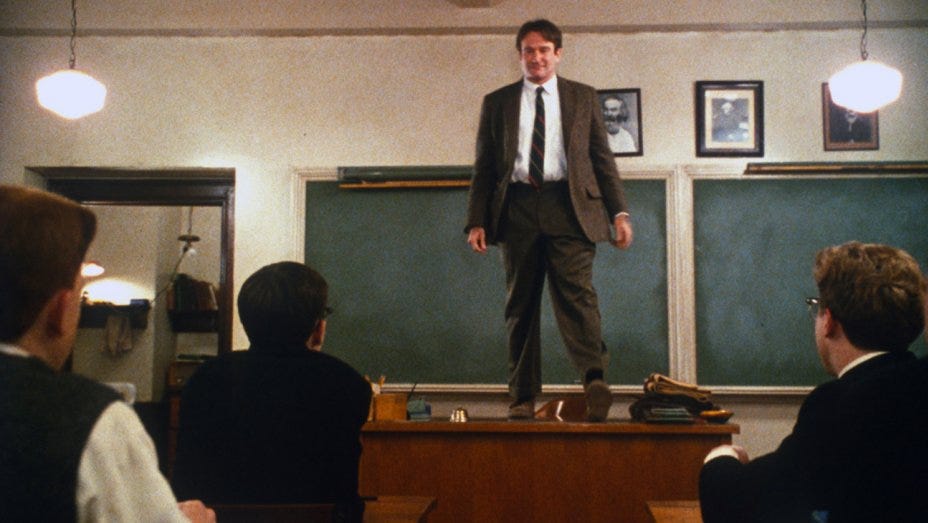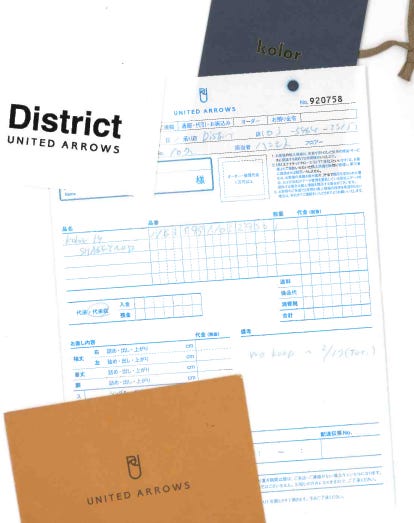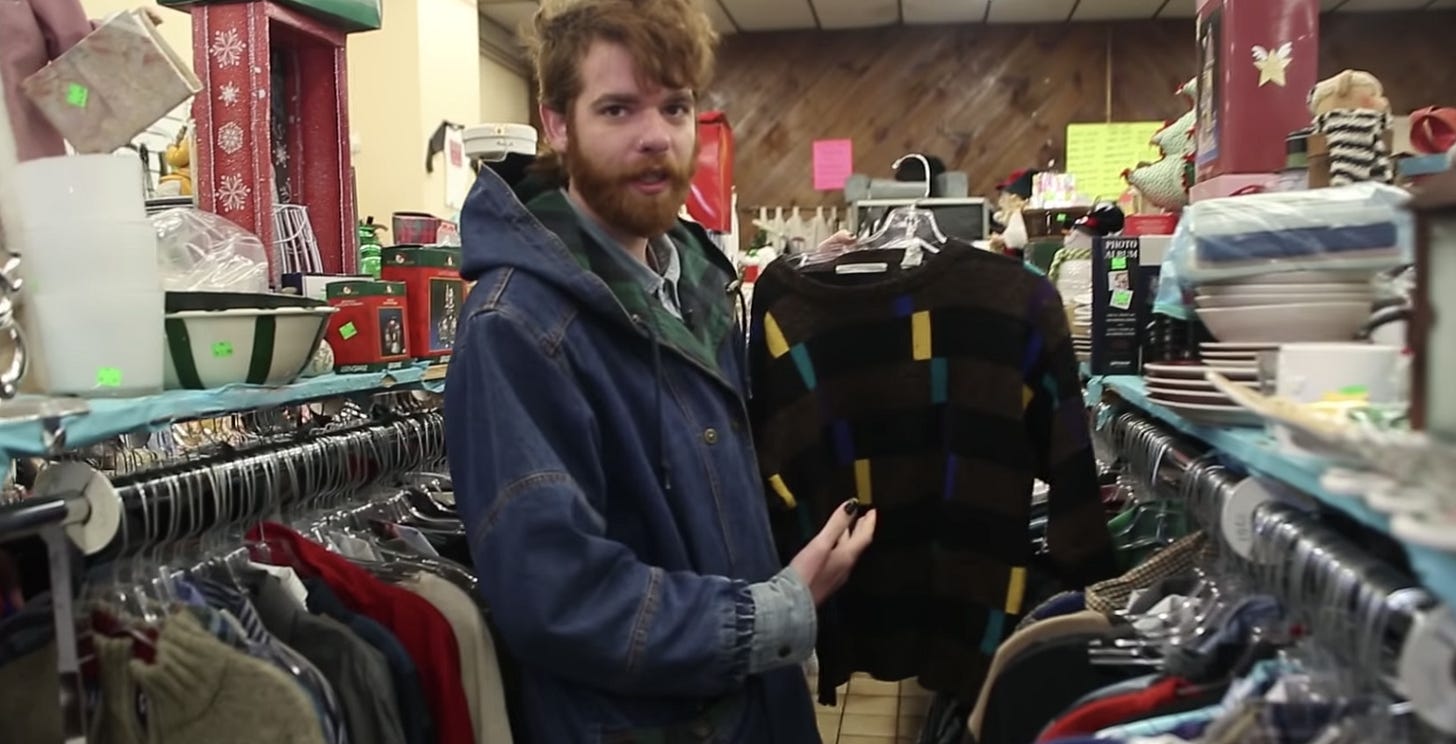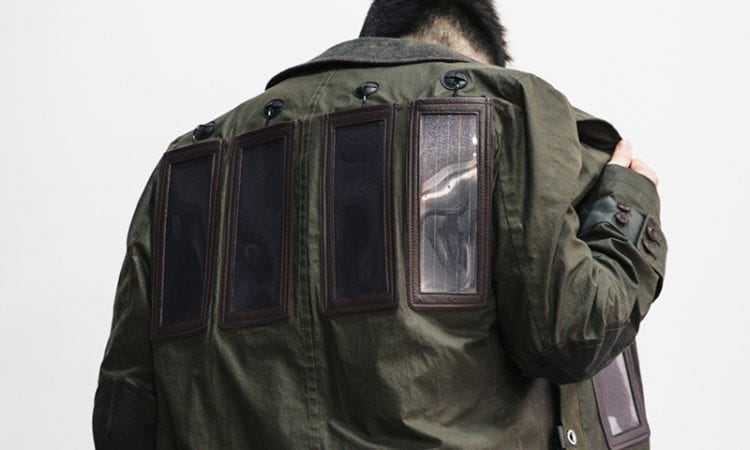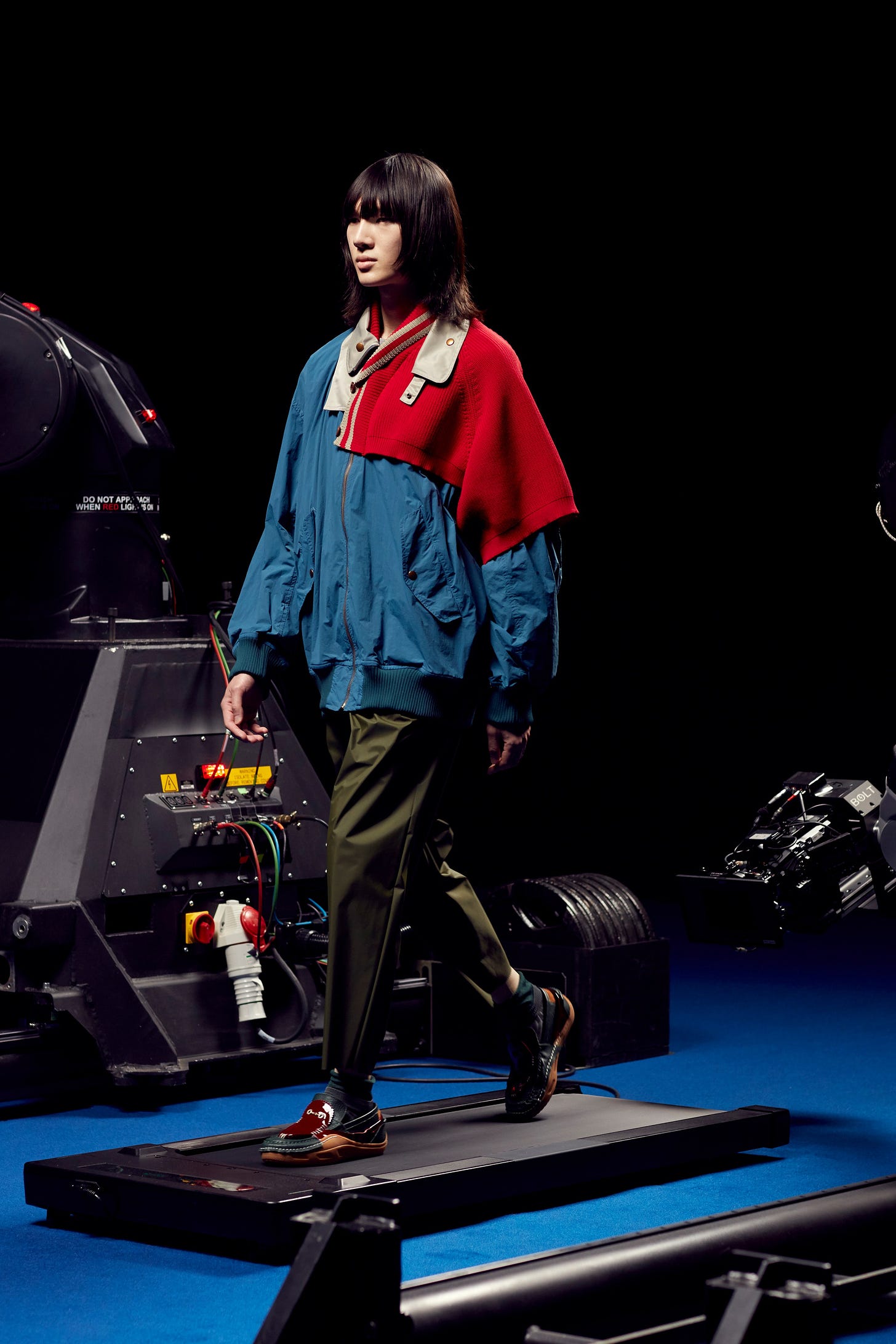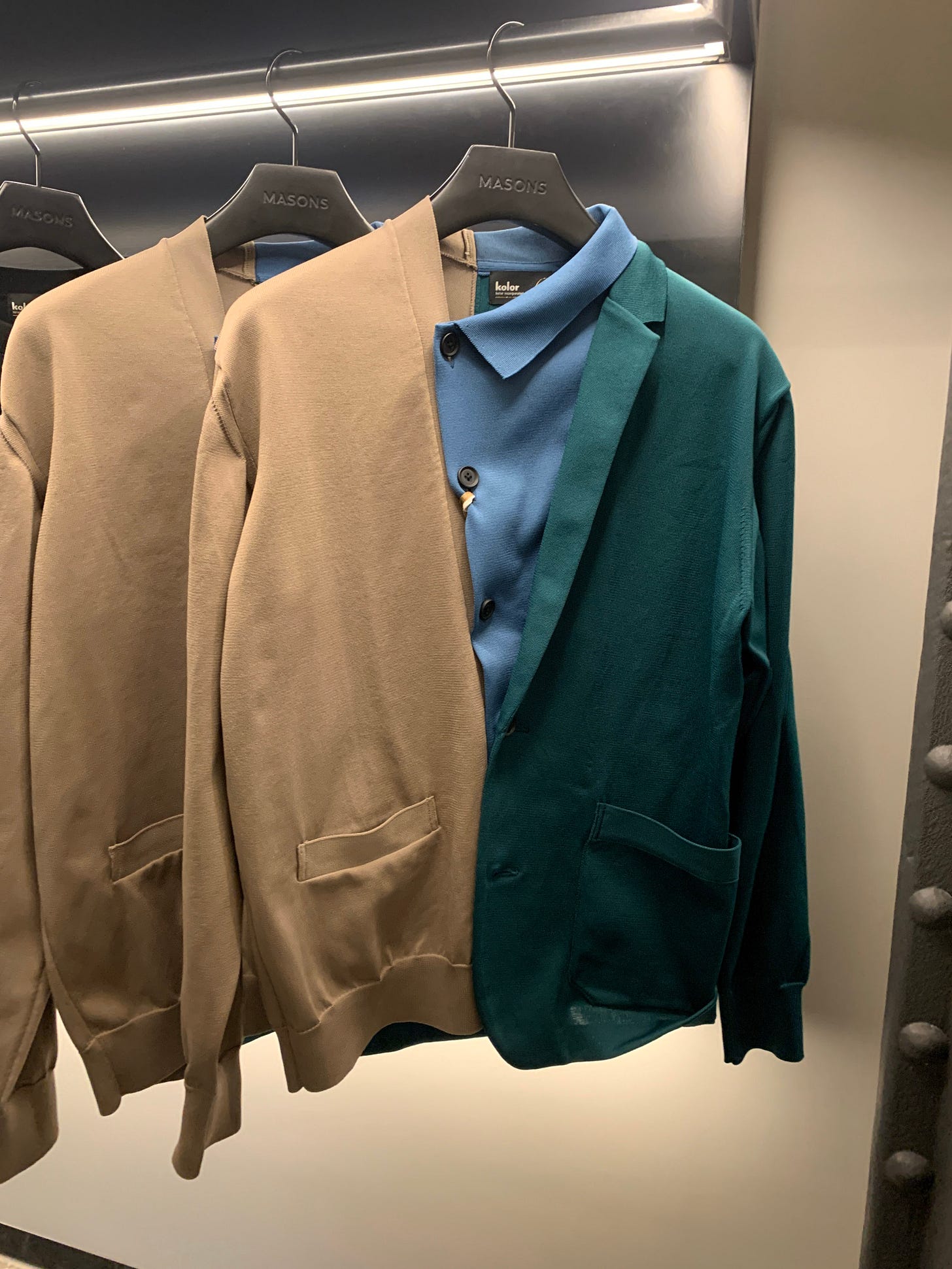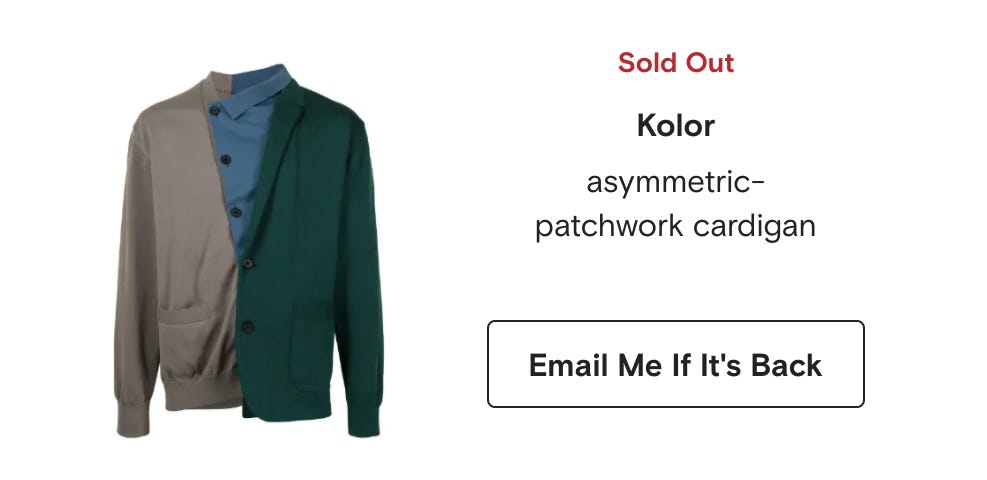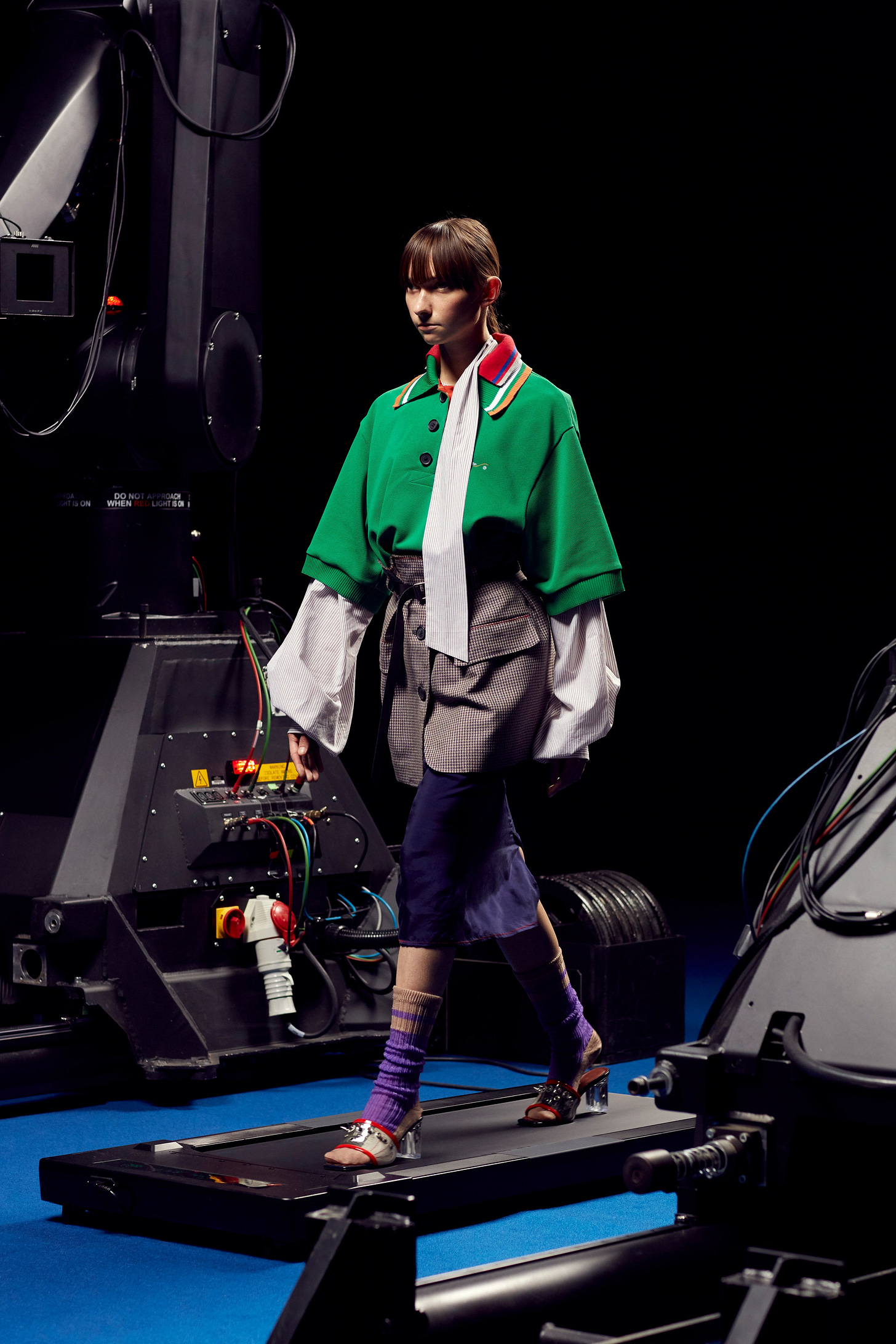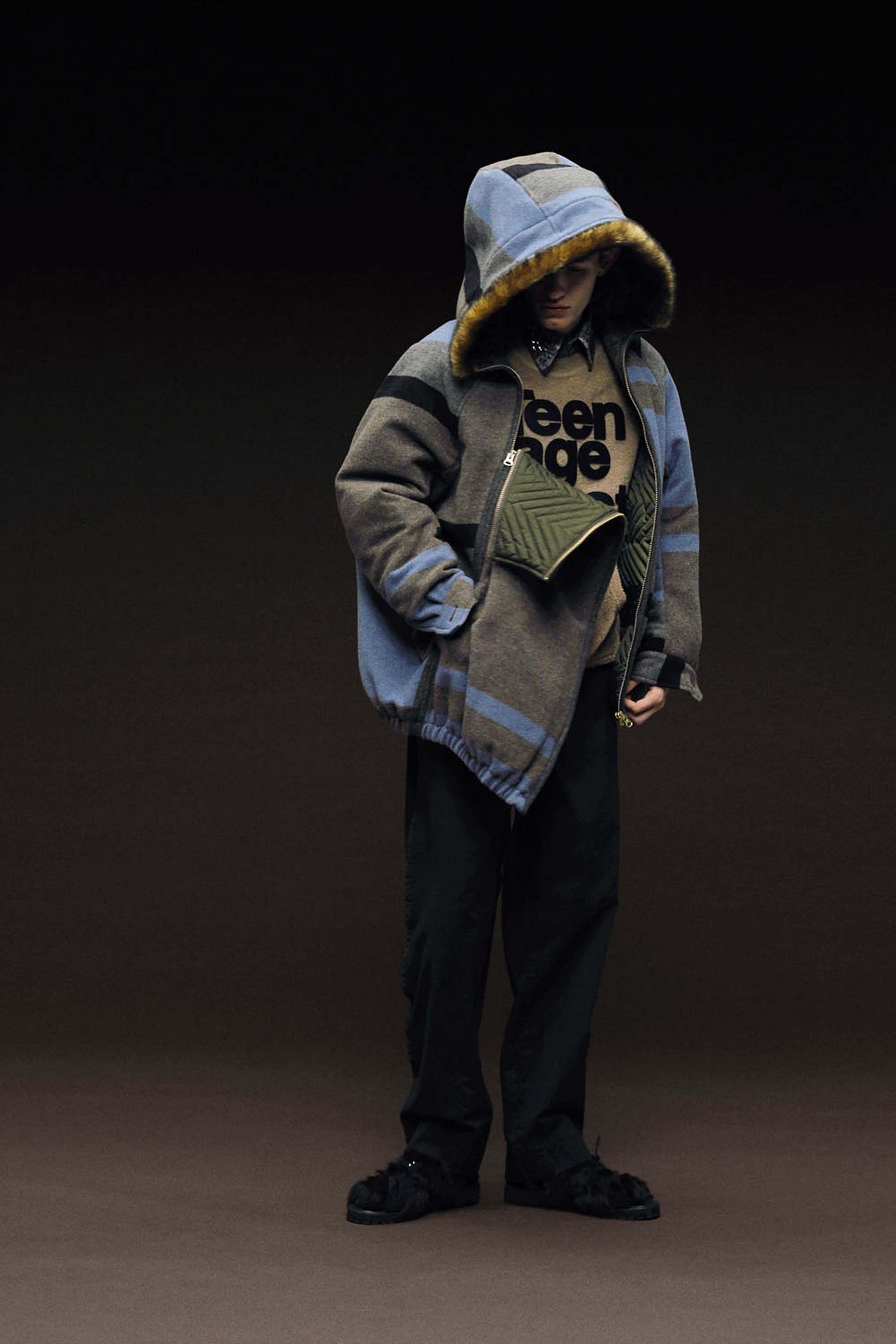Kolor by numbers
Can you remember, so clearly, the point at which you Robert Frost’d1 your life and ended up going down the wrong (if not wrong, prohibitively expensive?) path? I think that I can. Maybe not the precise moment, i’ll concede that— but definitely one that changed the course of my adult life. Frost’s final lines of his poem read like so:
Two roads diverged in a wood, and I—
I took the one less travelled by,
And that has made all the difference.
David Orr, in the The Paris Review, actually published an excellent long-form piece on this exact poem in 2015. Titled “The Most Misread Poem in America”2; Orr provides a stellar contemporary analysis of a piece of work that dates back to 1915: over 100 years ago (at the current time of writing). For something to be being read, or interpreted wrong— over 100 years later? Well, we must all fuckin’ suck at reading poetry. You can imagine why: every middle-school English student is practically groaning in their seat as their teacher; dressed in some haphazard tweed ensemble (I’m projecting, don’t worry about it) launches into a soliloquy on the importance of narrative poetry3. We’ve all been there.
Orr’s conclusion is that Frost’s poem is something of a wolf in sheep’s clothing. It’s an ode to the way we trick ourselves into rationalising that we’ve made the right decision. Justifying, as a piece of self-deception; as Orr calls it, that our choice at that moment in the yellow wood has had an affirming impact on our lives. What a crock of shit. But it’s with no hesitation and uncertainty that the time I swiped my MasterCard Foreign Currency Cash Passport at Harajuku’s United Arrows District4 store that it was like speed, right into my veins. For a slightly-chubby straight edge kid, there was no other way to get a high like that. Outside from moshing, maybe. In buying a pair of woollen Kolor trousers5, i’d been initiated into a world I knew nothing about. I still have the receipt6.
My first purchase of ‘designer clothing’ came with it many, many more: awakening an insatiable hunger to both style myself as ridiculously as possible, but also to acquire and collect as many interesting and archival pieces as my grubby fingers would allow me; and to learn about the history behind them as wearable pieces of art. It’s not a unique image to call to mind: just one search of any archival-related fashion group on Facebook will yield an army of Belgian “fashionista” teenagers trying to flip samples they picked up from the Raf Simons warehouse sales. In the words of Dolores O’Riordan7: Everybody Else Is Doing It, So Why Can’t We? Thanks, you degenerates, for making everything completely unaffordable.
Kolor, helmed by Junichi Abe, was somehow the brand behind the first big-ticket item i’d ever bought from a retail store. It took me two whole days of ruminating over them before I actually pulled the trigger. I had stumbled into the store; unsure entirely of what it was. Helped by a friendly sales representative, H. Yamamoto; I was guided to a lovely brown pair of woollen trousers he insisted would “suit me”. I looked particularly dishevelled at this point in time: probably dressed like i’d come from an Australian op-shop (read: thrift) in the country8.
I can remember trying them on— and being astounded at the length, the hem still unfinished.
“What’s this about then?” I said, in a British accent to appear cultured.
Apparently pants like this were sold unfinished so that the buyer could have them tailored to suit at the point of purchase. Um— pardon me? I have to pay for the pants and then have them altered on top? What kind of dystopia was I living in? Regardless of my opinion at the time, I sauntered back two days later and signed my name on the dotted line: i’d bought my first piece of new, retail designer clothing. Confetti fell from the ceiling. In the back of the room, up came the trumpeters— I was Keira Knightley at her wedding in Love Actually9.
Unfortunately for my bank account, it didn’t take long to follow it up: I was in Tokyo, the fashion capital of the world for young, hipster Australians10, and the GYRE Comme des Garçons complex was only 220 metres away.
You can bet your bottom dollar I walked right in there to the PLAY store and bought the first striped shirt I could get my hands on. Finally. I was in. One of them. I was cool! Stripping away my brand of dry sarcasm, it was a strange feeling to spend over $100 dollars on a T-shirt, and i’ve definitely spent more since then. Depending who you’re talking to, such a figure can be met with astonishment; revulsion; understanding or even camaraderie. The price tag on an item from the Comme des Garçons house is just a party trick, now in 2021 more than ever. But the mysterious nature of the brand, the designers and pattern makers that work there— keep me coming back to the Japanese world of couture and those responsible for keeping the wheels of that machine turning.
“Hey bro, check out this fully-sick Junya Watanabe jacket that can charge my phone with the solar panels in the back.”
“…but you’re wearing it to a lo-fi house rave, and it’s 3 in the morning?”
“Yeah, but it cost $2,48011.”
I didn’t know at the time, but Junichi Abe once worked at Comme. Like every other big name in Japanese fashion; or out of those that are stocked at Dover Street Market; Abe graduated from the prestigious Bunka Fashion College. You’d lose your fingers trying to count the notable alumni from such an institution— Kenzo Takada, Yohji Yamamoto, Junya Watanabe— pretty much everyone (well, except Chitose Abe née Sakai12; his eventual wife) there is to know. Junichi actually worked on the Junya Watanabe team before starting his own label with three friends from Bunka, ppCM, in 1994.
ppCM is pretty much unfindable now. It’s one of those 90’s Japanese brands that didn’t take off, and you can’t find relics from their earlier collections for sale Grailed and The Real Real. It comes up every-now-and-again, like these beautiful military fatigues that sold only 5 months ago for the low price of $270 USD13. Undoubtedly, that’s more than ppCM would have retailed this pair for back then, but older clothing somehow fetches a higher premium (just take savvy Carhartt consumers’ lead on this one14) despite the multiple plane trips it has to go on before it reaches you. I thought second-hand fashion was meant to be sustainable?
After the dissolution of ppCM in 2004, Abe launched Kolor. His ppCM co-conspirators launched brands too, Akinori Morita with Dotswear and Taku Watanabe with Aitch, but these have both fallen completely into the lens of obscurity. In conversation with Interview magazine in 201715, Abe reflected on his brands’ mission statement. “It cannot be defined by words, and I think it shouldn’t be either,” he said; and I could feel every soy-boy ejaculating in their Calvins at the mystery in such a statement. Why do creatives feel the need to say such ridiculous things about their creations? They should all be muzzled.
Kolor is definitely not under-appreciated in the same way ppCM was, and still is, but doesn’t quite maintain the same interest that many of the other Japanese brands popular in the market do. This isn’t a fault of the designer in the slightest: Kolor use beautiful colour palettes; high quality and innovative fabrics; and work to develop new shapes and silhouettes. On top of this, an affordable diffusion line in Kolor: Beacon16 and collaborations with Adidas17 ensure that for customers eager to engage with the brand’s product, they’re still able to do so. Most brands now do this not for want of it; but out of necessity. The release catalogue is flooded and the market completely saturated, but new product continues to line the shelves. The inter-generational ADHD that’s come from an inability to concentrate on anything longer than a viral TikTok video has now infected our interest in clothing.
But it’s Kolor’s Spring/Summer 2022 menswear collection18 that has me writing this think-piece about my relationship with the brand, and designer fashion in general. I walked into Masons19, an upmarket boutique in Melbourne, earlier this year and stumbled upon a few of the items they had in stock. It’s rare in Australia to find clothing like this new, and on top of that, it’s fucking dear. Import taxes and our currency’s weakness do us no favours. The cardigan below was about $1000 Australian dollars, and despite trying it on and becoming utterly infatuated with it; I couldn’t afford it. I’m still thinking about it though. Clearly. Now and again i’ll trawl the Yahoo! auction pages in Japan at 2 in the morning, trying to find it for a more reasonable price. My day will come, brothers and sisters.
You can see that my apprehension of the price wasn’t something that stopped everyone else from buying it. If only my salary as a high-school teacher included a designer clothing budget. I’d be all over it like a rash. I even tried the fucking thing on!
Maybe that’s why I like this collection, though. The references to uniform tropes throughout; the dishevelled shapes and collars from classic schoolyard looks— the opposite of what i’m used to seeing on a daily basis. Yes, I know Raf Simons has done it before— the oversized sweaters20, the varsity jackets21 (thank god there aren’t varsity jackets in this Kolor collection), but this collection has a vibrancy to it in the colours; the patterns— that clutches my interest despite being utterly bored with new fashion in the last two, three, four years. It’s fitting that a collection from the same designer who hooked me in (read: corrupted my soul) is what inspires me to search the internet for something nice; to listen to a podcast, to read something fashion-related again.
My interest is also in the subversion of gender that Abe portrays on the runway. It’s a menswear collection presented in name only, and there were just as many non-male models walking down the catwalk as there were men. There’s no denying that despite the label, this is an ostensibly unisex presentation (it includes pieces from the actual womenswear line, too). Nothing looks out of place; however— i’d hazard that my favourite looks from the bunch of “Frankenstein fusions” are those that look at home on either feminine or masculine body shapes; where they can be worn effortlessly by anyone who dares to put their arms and legs through the designated holes.
Looking over the newer iterations of Abe’s ideas, i’m reminded of particular pieces that have caught my interest in years-gone-by. A pair of sandals from 201522; as beautiful as they are hideous. 2015’s autumn collection utilised colourblocking on a run of suits, scarves and this adorable sweater23. 2021’s youthful take was foreshadowed in 2018, too— Abe’s collection showcasing DIY Thrasher rip-off logos24 and images of potentially the unhappiest teenage model to ever wear over $5,000 of free clothing. I love everything about this image.
What I mean to say is these images, these looks and collections— they aren’t trying to reinvent the wheel, entirely; rather to re-use key themes and inspirations that Abe finds enriching. It’s never really the same: new colours; new prints and block lettering on the front of his T-shirts ensure that at least, on face value, he’s delivering something new. Another call-back to a particular moment in time; a nostalgia trip for a different intended audience.
Though, even with my love of Kolor; I think it’s fair to say I’m still disenfranchised with the world of fashion as a whole. Designer fashion is practically one of the greatest con-jobs in modern memory; alongside contemporary art and any form of a ‘creative director’25 position. I’m still astounded that somehow, they still exist. I see you, brand content creators. Those of us that consume fashion-related material know that we’re realistically just buying the same thing year in; year out— maybe in a different colour, or with some new stitching, or perhaps we’re lucky enough to buy something made from an innovative fabric like Dyneema26. Maybe we’re not so much lucky as we are rich to buy something made with old, repurposed fabrics instead; as is created by those working at ‘new-new age brands’ like Bode27 and Archivio J.M. Ribot28.
“Please daddy, can you give me $3,000 to buy parts of an old quilt sewn back together?”
If my children ever say those cursed words to me, i’ll only have this post to blame.
I can’t tell you which path I should have taken that day, at the counter as I pondered over whether to buy those Kolor trousers. They certainly look good now, 7 yeas later.

I don’t think it matters. Either way i’d eventually have been corrupted by the soul-sucking pleasure of the Japanese avant-garde. I’m white and I live in Australia. It’s practically my destiny, right? That’s what Frost is trying to say: “It was said that you would destroy the Sith, not join them!29”
By the way… those Junya Watanabe jackets went to final sale. Don’t pay whatever the 300% price on Grailed is. You’re welcome.
The Path Not Taken, written by Robert Frost
Robin Williams in Dead Poets Society
Everybody Else Is Doing It, So Why Can’t We, by The Cranberries
The 1:37 wedding scene from Love Actually
Julia Baird for the Sydney Morning Herald, “Australian tourists risk turning Japan into another Bali”
The Independent reports on Junya Watanabe’s solar powered coat & cost
Sacai on Grailed’s Dry Clean Only
ppCM military trousers, listing sold
Why teens are paying $325 for beat-up jackets on Instagram: Wall Street Journal
Interview magazine interview Junichi Abe
Kolor: Beacon’s online webstore
A pair of particularly hideous UltraBoost sneakers
Kolor’s Spring/Summer 2022 collection runway, shot by Vogue
Raf Simons’ Autumn/Winter 2017 oversized v-neck sweaters
Raf Simons’ Autumn/Winter 2002 varsity jacket
Dyneema as a ‘miracle material’
Archivio J.M. Ribot, stocked at Darklands Berlin


